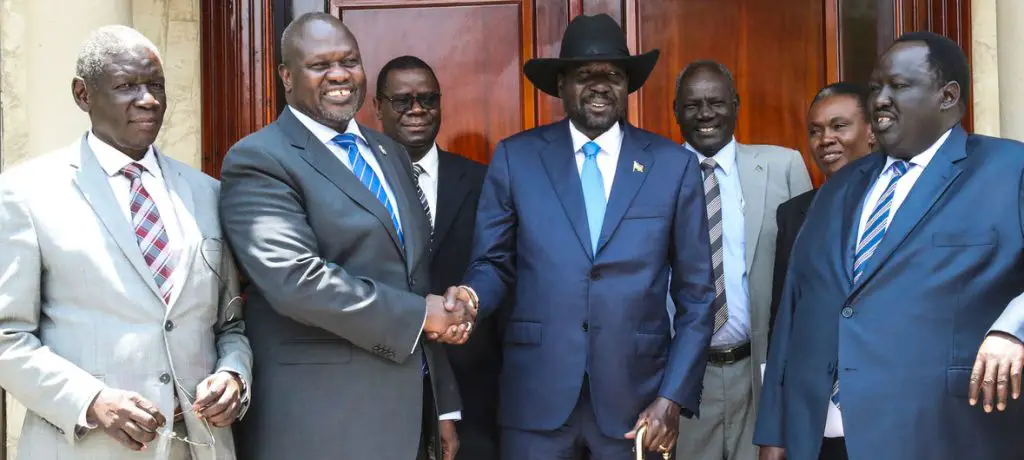South Sudan’s handshake’ has been welcomed by economists who say the deal resonates with the demands of the economy, which according to the World Bank and IMF, expects it to be one of the fastest-growing in the continent.
Last week, a new government of national unity was unveiled with Dr. Riek Machar joining the government as a vice president ending six years of civil war that has killed about 400,000 people and displaced millions. The war has also led to massive looting and wastage of oil and the proceeds of the natural resource leaving the country impoverished.
According to the World Bank, Africa’s top performers in 2020 will be led by South Sudan (8.2%). This coupled with the new peace agreement is expected to overturn the negative tide the country has faced in the last few years.GDP Annual Growth Rate in South Sudan averaged -3.46 percent from 2009 until 2018, reaching an all-time high of 15.90 percent in 2014 and a record low of -46.10 percent in 2012.
South Sudan, officially recognized as a country in July 2011, is the youngest nation in the world. Despite taking over about 75 percent of old Sudan’s oil reserves, it is one of the poorest regions in Africa and government revenues are still dependent on foreign aid. A majority of the population relies on subsistence agriculture.
Just two years after independence, the country returned to violent conflict after President Kiir sacked Machar, then the deputy president in December 2013. President Kiir had accused Dr. Machar of planning to overthrow him, which Dr. Machar denied.
Lack of basic infrastructures such as paved roads, electricity and water supply is a major setback to the country’s development. After an unusually peaceful independence process, the relationship with Sudan has been tense. Pending agreements on border lines, oil revenue share, ethnic rivalries, and weak government influence may hamper South Sudan’s future.
South Sudan’s development is pegged on global oil prices as its main revenue is generated by oil sales. South Sudan is one of the most oil-dependent countries in the world, with oil accounting for almost the totality of exports, and more than 40% of its gross domestic product (GDP) according to World Bank.
South Sudan’s review of oil reserves states that the country had about 1.1 billion barrels worth of developed and undeveloped oil reserves as of January 2015. South Sudan’s current production stands at 170,000 barrels per day (bpd) from two oil concession blocks.
Much of the proceeds of oil are used for government services and military use which has dwindled the country’s coffers. The country also shares quite a significant oil revenue with its northern neighbor, Sudan as part of the pre-independence agreement on letting Sudan recoup the money is used for oil exploration and mining.
South Sudan pays for any oil pumped through the north. In this agreement signed in Khartoum, it stipulates that South Sudan pays 26 U.S. dollars for each oil barrel passing through the Sudanese pipeline operator, Petrolines for Crude Oil Ltd. which belongs to the Greater Nile Petroleum Operating Company, and 24.1 dollars for each oil barrel transported through Bashayer Pipeline Company which belongs to Petrodar Operating Company.
Sudan and South Sudan first signed the oil deal in 2012 and then extended it until Dec. 31, 2019. Sudan lost two-thirds of its oil revenues after the split of South Sudan in 2011, but the transportation of South Sudan’s oil through Sudan’s pipelines provides revenues to boost Sudan’s difficult economy.
